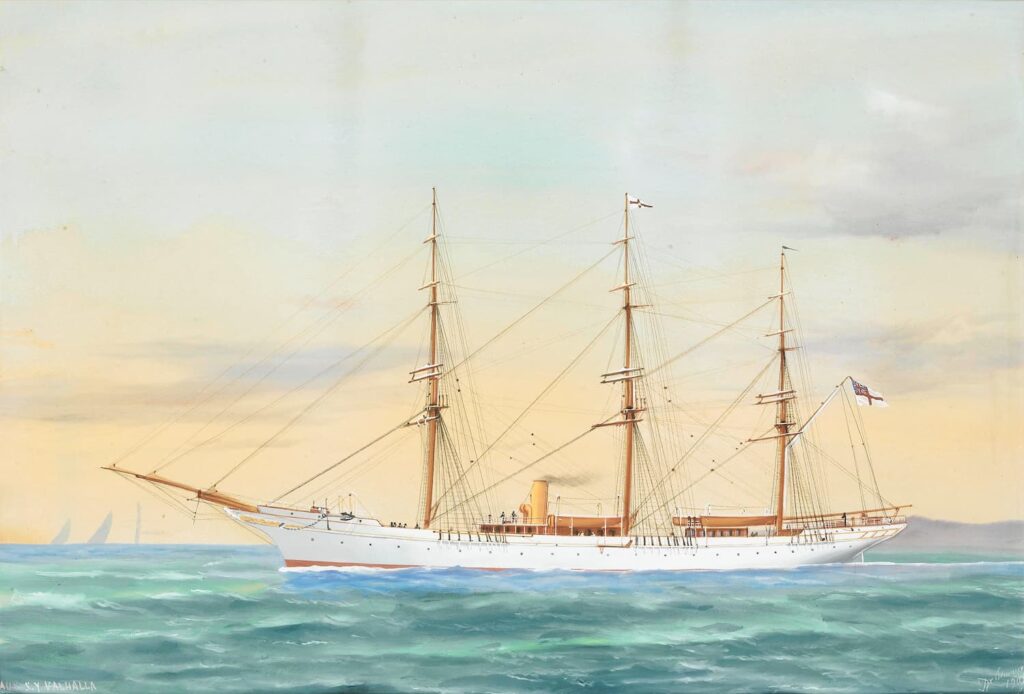The marine monster of HMS Valhalla is a cryptid observed by two naturalists who were members of a British scientific expedition off the mouth of the Paraíba River in Brazil in 1905. Along with the Steller’s sea ape, this is one of the very few sightings of animals still unknown to science supported by the observation and description of established naturalists. The description was very accurate and detailed, based on the observation with professional binoculars of the time for a considerable duration.
Description
Entomologist Michael J. Nicoll and naturalist Edmund Meade-Waldo participated in the cruise of the yacht HMS Valhalla, organized by the Earl of Crawford, initially heading towards the shores of Brazil and later towards the circumnavigation of Africa, returning to England via the Suez Canal. On December 7, 1905, around 10:25, Meade-Waldo was drawn to the attention of Nicoll, who at the stern of the ship was observing what appeared to be the fin of a large fish about 90 meters away.
After careful analysis, it turned out to be a kind of fin or crest with wrinkled edges, dark brown-algae in color, about two meters long, protruding from the water for at least.
Behind it was clearly visible, underwater, a body of considerable size.
With binoculars in hand, the naturalists were able to observe in more detail a head and a huge neck in front of the fin. The neck appeared to be the thickness of a fairly slender human body and similar to that of an eel, while the head resembled that of a turtle.
The eyes and features of the snout were also visible.

The movement of the neck was peculiar, swaying from side to side. The color of the head and neck was dark brown above and whitish below. Several hours later, some sailors again observed a creature stirring just below the water and asserted that it was definitely not a cetacean, as it did not emit any spout during the observation. Several years later, Nicoll, reflecting on the incident, stated that, although it could have been what was commonly called a giant sea serpent, he believed it was instead a marine mammal.
Additional Sightings
Nineteen years later, British navigator C. H. Prodgers noted, in his book Adventures in Peru, that he too had observed the creature in the same location off the coast of Brazil, also in the same year. He added that the head was as large as that of a cow, and the body was large and round like a barrel. A creature very similar was the subject of another sighting by the crew of HMS Daedalus in 1848 along the coasts of South Africa.
Explanations
The observation made by two members of the Zoological Society makes alternative explanations that could lead to incorrect observations of animals already known to the science of the time very difficult. It is likely, therefore, that these were creatures subjected to particularly unfavorable conditions such as the so-called entanglements, i.e., entanglements in fishing nets or massive algae banks.
Heuvelmans, observing the arrangement of the mouth in relation to the eyes, refutes the hypothesis of a mammal, suggesting more that it was a reptile. Matthew A. Bille suggests the animal belongs to the Grongo family. Other bizarre hypotheses include swordfish with impaled fish, giant squids, whale sharks, or seals observed in unusual positions.


